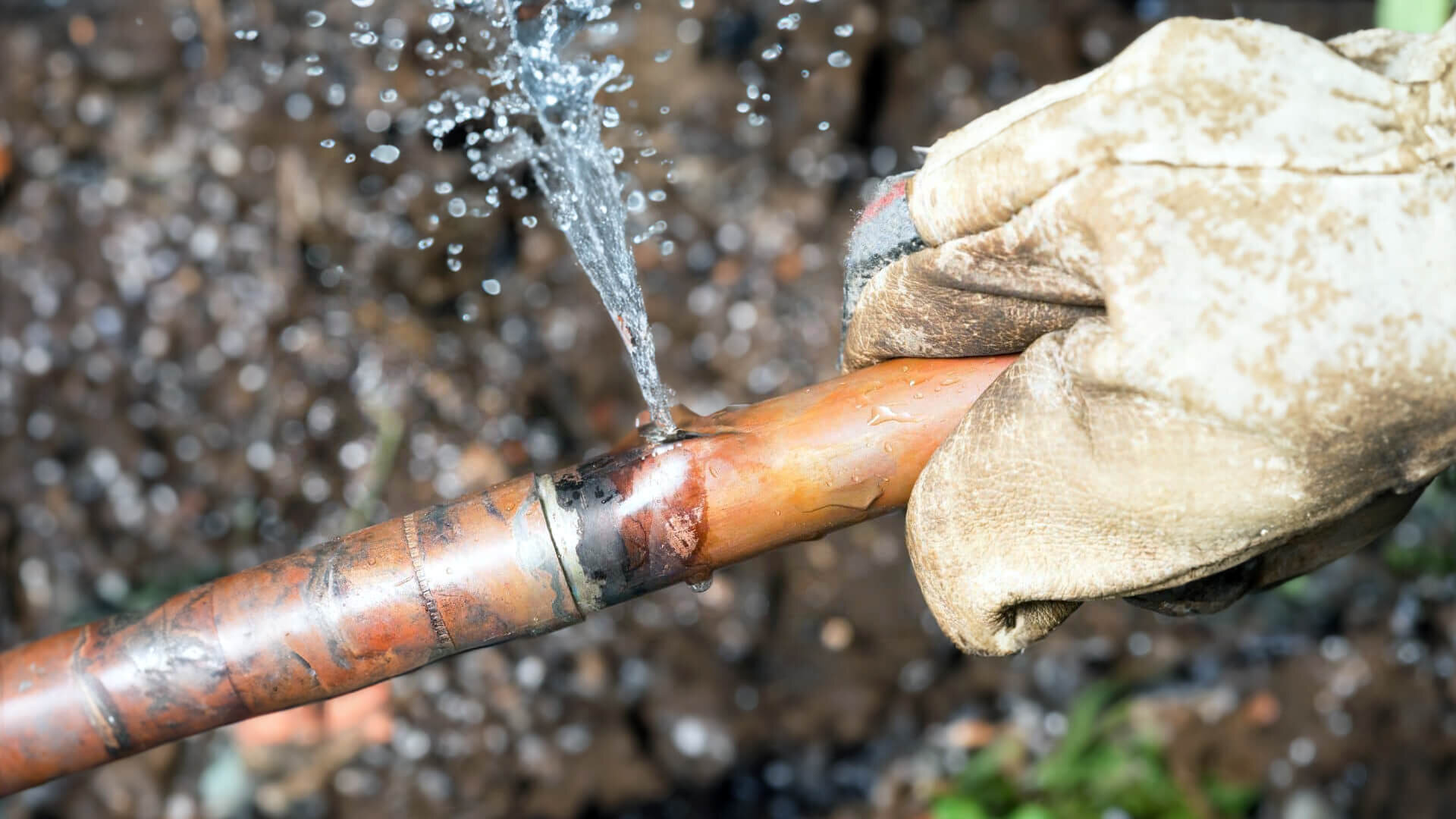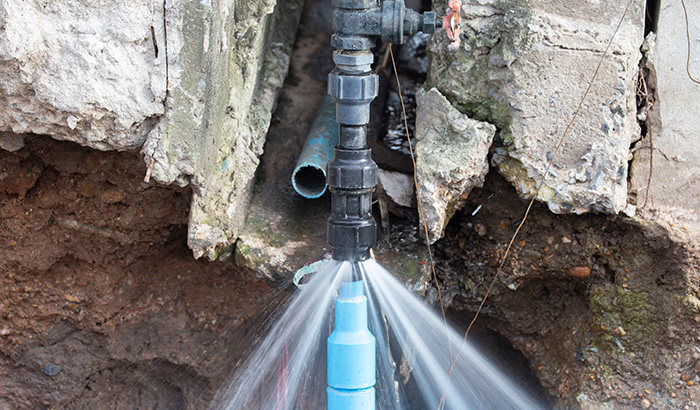Emergency Burst Pipe Services: Fast Response to Avoid Extensive Damage
Emergency Burst Pipe Services: Fast Response to Avoid Extensive Damage
Blog Article
Protecting Against Burst Piping: Crucial Tips to Shield Your Pipes
Avoiding burst pipes is an important worry for homeowners, especially during colder months when the danger of cold is increased. Applying tactical steps such as correct insulation, regular evaluations, and keeping consistent indoor temperature levels can considerably decrease the likelihood of pipeline failing. In addition, understanding emergency procedures gears up homeowners to respond swiftly to prospective pipes issues. However, several are uninformed of the certain vulnerabilities that their pipelines may deal with. Discovering these susceptabilities can give vital understandings right into protecting your pipes system effectively.
Understand Pipe Vulnerabilities
Comprehending pipe vulnerabilities is vital for efficient pipes upkeep and preventing expensive damage. Numerous aspects contribute to the vulnerability of pipes to bursts, including material make-up, age, and environmental problems. Older pipelines, especially those made from galvanized steel or polybutylene, typically deteriorate in time, resulting in increased risk of tears and leakages.
Temperature changes can also dramatically impact pipeline stability. In colder environments, water entraped in pipes can freeze, broadening and putting in stress on the pipe walls, which may ultimately bring about a burst. Furthermore, high water pressure can stress pipes, specifically at bends and joints, enhancing the chance of failing.

Insulate Piping Properly
Proper insulation of pipelines is crucial for avoiding freezing and succeeding ruptureds during chilly weather condition (burst pipe). Insulating your pipes system properly safeguards against temperature level goes down that can bring about costly damage. Begin by determining susceptible areas where pipelines are subjected to outside temperatures, such as basements, attic rooms, and outside walls
Usage foam pipe insulation sleeves or wrap insulation tape around these areas to offer a safety obstacle. Guarantee that all sections of the pipelines, particularly those with minimal warmth direct exposure, get adequate insulation. Pay special attention to fittings and joints, as these are extra at risk to cold.
When shielding, it's vital to select materials that satisfy local structure codes and are suitable for the certain atmosphere. Fiberglass insulation is commonly advised for its thermal resistance properties. Additionally, take into consideration making use of warm cables or tape in severe conditions, which can be plugged in to offer supplementary heat
On a regular basis check shielded pipelines for any type of indicators of wear or damage, as endangered insulation can decrease its efficiency. By taking these aggressive steps, you significantly decrease the threat of pipe ruptureds, ensuring a trustworthy plumbing system throughout the cold weather.
Maintain Constant Temperature
A stable indoor temperature level is important for avoiding burst pipelines during the freezing months. When temperature levels decrease, water within pipes can ice up, producing and expanding pressure that may eventually trigger the pipelines to ruptured. To minimize this threat, house owners ought to keep a regular temperature throughout their living space, ideally no reduced than 55 ° F(13 ° C)Utilizing a programmable thermostat can aid take care of interior temperatures successfully, guaranteeing that rooms with plumbing stay cozy also when your house is unoccupied. Pay special attention to areas that are more prone to cool, such as attics, cellars, and garages. Keeping closet doors open under sinks can likewise permit warmer air from the home to flow around pipes.
In enhancement, it is prudent to permit faucets to trickle somewhat during extreme cold snaps. This minor circulation of water can stop freezing by relieving stress within the pipelines. During specifically severe weather condition events, consider briefly putting on hold any nighttime troubles on your thermostat to maintain a consistent cozy setting. By applying these methods, house owners can considerably decrease the risk of pipeline bursts and guard their pipes systems versus the severe wintertime elements.
Routinely Check Pipes
Normal examinations of pipes systems are critical for avoiding ruptured pipes and preserving total home integrity. Routine checks enable homeowners to determine prospective problems before they escalate right into expensive fixings or major water damages. Throughout these examinations, it is necessary to take a look at visible pipelines for signs of rust, leaks, or wear. Pay unique interest to locations susceptible to freezing, such as cellars, attics, and outside walls.
Additionally, evaluating links and joints is essential, as these points are typically prone to leakages. House owners ought to likewise evaluate water stress levels, as too much stress can stress the pipes system and boost the danger of pipeline ruptureds.
Think about scheduling specialist pipes examinations at least as soon as a year, especially prior to winter months, to ensure your system is prepared for chillier temperatures. By being proactive in your approach, you can protect your home versus the disruptive and costly consequences of burst pipelines.
Know Emergency Procedures
Recognizing emergency procedures is crucial for each home owner, especially after carrying out regular pipes assessments. Being gotten ready for a pipes emergency can substantially minimize damage and conserve expenses. Find your primary water shut-off valve; it is generally located near the water meter or where the primary line enters your home. Familiarize yourself with its procedure, as shutting off the water swiftly can stop considerable flooding.
Following, keep crucial tools convenient. A plumbing emergency set ought to include a wrench, plunger, and towels, in addition to a flashlight and a container for small leaks. Furthermore, take into consideration having the get in touch with information for a trusted plumbing technician readily offered, should the situation escalate beyond your control.
If you find a leakage or ruptured pipe, instantly turn off the water and notify your plumber. Moreover, document the damage with photographs for insurance coverage purposes. burst pipe. Be aware of the indications of potential pipes concerns, such as uncommon water pressure fluctuations or damp spots on walls
Eventually, proactive expertise and quick action are critical in handling pipes emergency situations, guaranteeing your home find remains safeguarded and reducing possible damages.

Conclusion
In read what he said final thought, protecting against ruptured pipelines requires a diverse method that includes understanding pipeline susceptabilities, proper insulation, maintaining constant indoor temperature levels, routine assessments, and knowledge of emergency treatments. By applying these important strategies, the threat of plumbing failings can be significantly minimized, therefore guaranteeing the long life and performance of the plumbing system. Proactive procedures not only guard against prospective damage however additionally contribute to overall water preservation and the protection of residential or commercial property.
In colder climates, water caught in pipes can ice up, expanding and applying stress on the pipeline wall surfaces, which may ultimately lead to a burst. When temperatures decline, water within pipelines can freeze, developing and expanding pressure that may eventually trigger the pipes to ruptured. By applying these strategies, home owners can dramatically lower the danger of pipe ruptureds and protect their plumbing systems versus the extreme winter months components.

Report this page